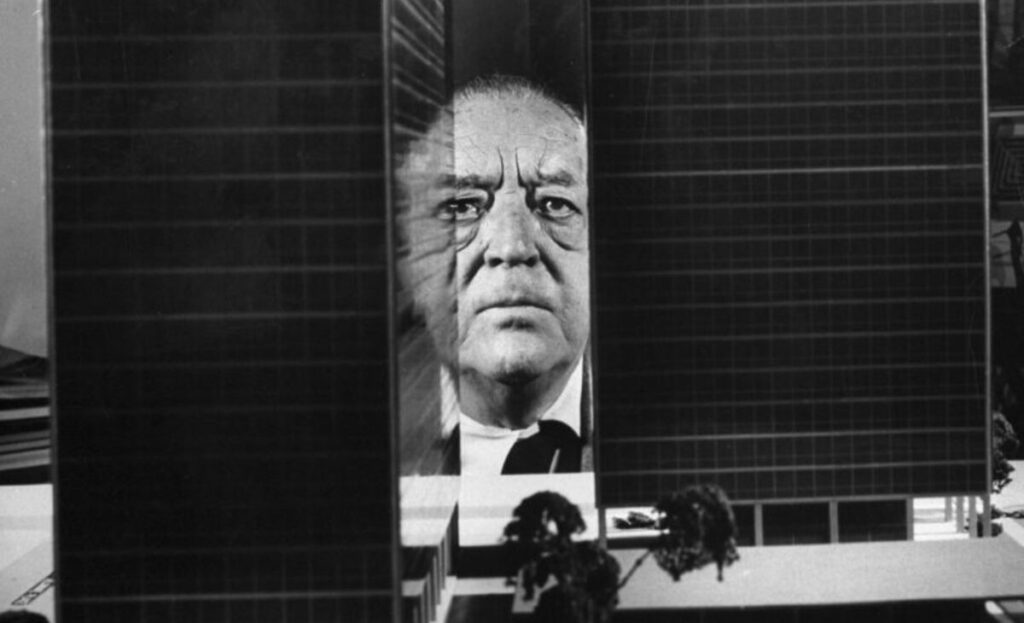Architects create new structures, from the exterior appearance to the structural support to the interconnecting systems that enable things like power and water to function. Knowledge of physics, materials, and curb appeal mixed with an architect’s inspiration to design a completely new home, workplace, stadium, or hospital. Architects bring ideas to life and contribute to the creation of notable structures and locations around the world. Here are 9 most famous and influential American architects.
Table of Contents
9 Famous American Architects Who Shaped Modern Design
1. Ludwig Mies van der Rohe
Project: IBM Building (330 North Wabash) (1973)
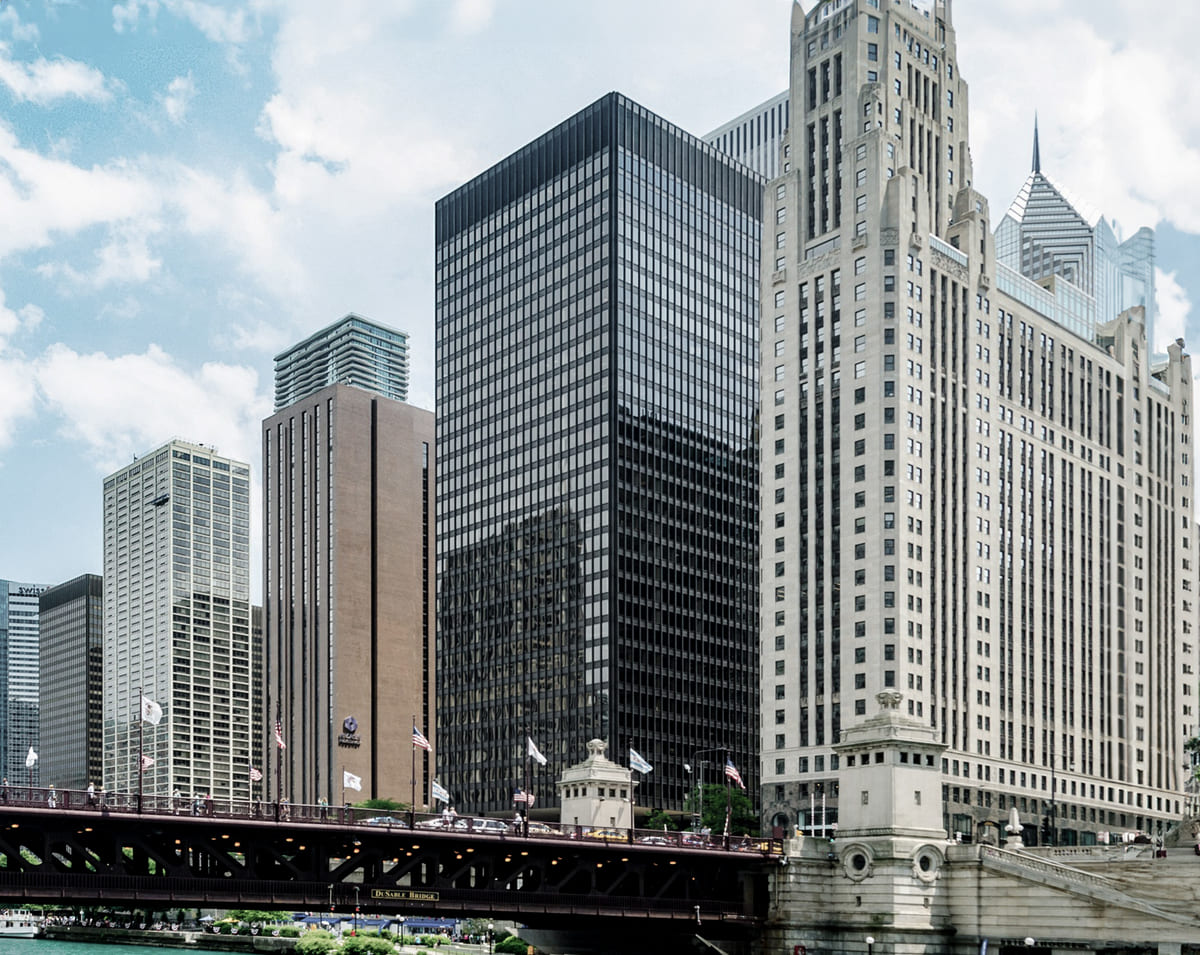
Ludwig Mies van der Rohe was a prominent modernist American architect of the twentieth century. Along with Walter Gropius and Le Corbusier, he established the International Style, which came to define contemporary architecture. Ludwig Mies van der Rohe was born Maria Ludwig Michael Mies on March 27, 1886, in Aachen, Germany. He grew up working in his father’s stonemasonry shop. He settled in Chicago, where many of his major later works, such as Crown Hall, are located. He died in Chicago on August 17, 1969, at the age of 83.
Mies received his education in Germany, where he trained under experienced stonemasons before enrolling in Berlin’s Royal Building Trade School in 1905. He later apprenticed with architect Bruno Paul and worked for renowned architect Peter Behrens from 1908 to 1912, alongside Walter Gropius and Le Corbusier, absorbing avant-garde design concepts. Mies was the director of architecture at Berlin’s pioneering Bauhaus school from 1930 to 1933, where he implemented a curriculum that combined architecture, art, and crafts. After moving to America in 1937, This American architect directed the architectural department at Chicago’s Armour Institute until 1958.
2. Norma Merrick Sklarek
Project: Gruen Associates, Commons-Courthouse Center, Columbus
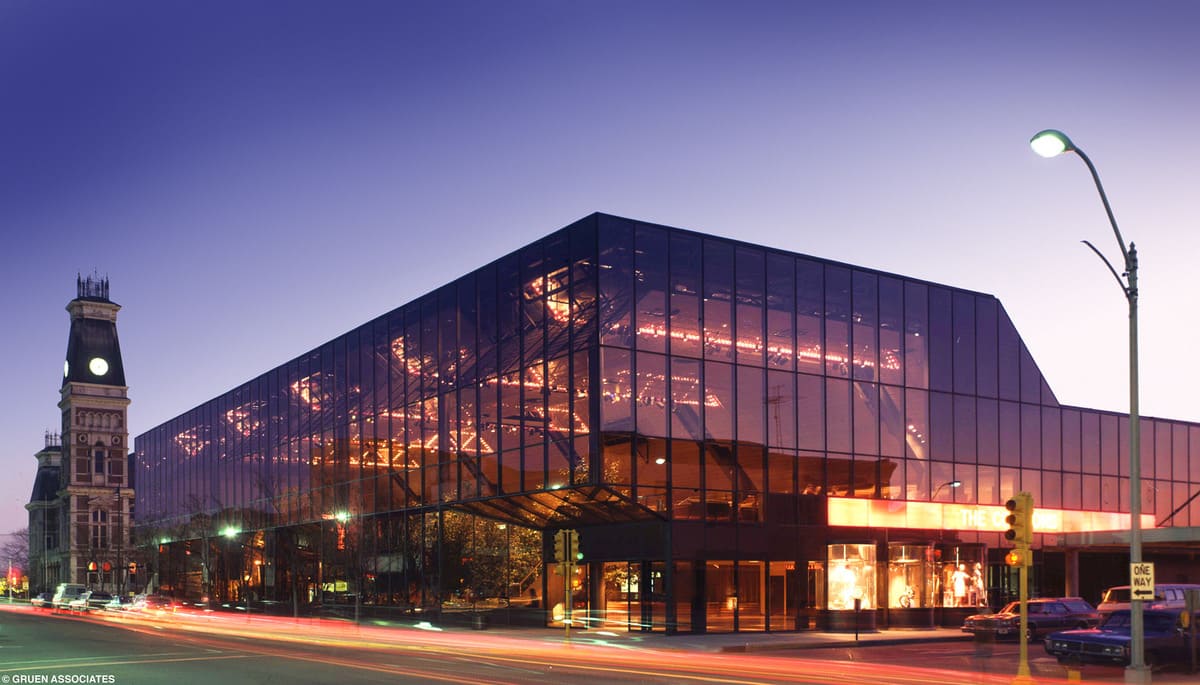
Norma Merrick Sklarek was a pioneering African-American architect known for breaking barriers in the male-dominated profession. She was the first Black woman to be licensed as an architect in New York and California. Norma Merrick Sklarek was born on April 15, 1926, in Harlem, New York, United States, to parents who were immigrants from the Caribbean. She grew up in New York City, attending Columbia University for architecture school. Sklarek practiced architecture in Los Angeles, California, starting in the 1960s. She also worked in New York on an important overseas project, the U.S. Embassy in Tokyo, Japan.
Norma Merrick Sklarek enrolled in the famed architecture department at Columbia University in New York City in the late 1940s. She graduated from Columbia with a Bachelor of Architecture degree in 1950. Sklarek was one of just a few women studying architecture at the time. Norma Merrick Sklarek worked for prestigious firms such as Skidmore, Owings & Merrill, and Gruen Associates for many years, contributing to many major modernist buildings.
3. Frederick Law Olmsted
Project: City Park System, Buffalo, New York, 1868
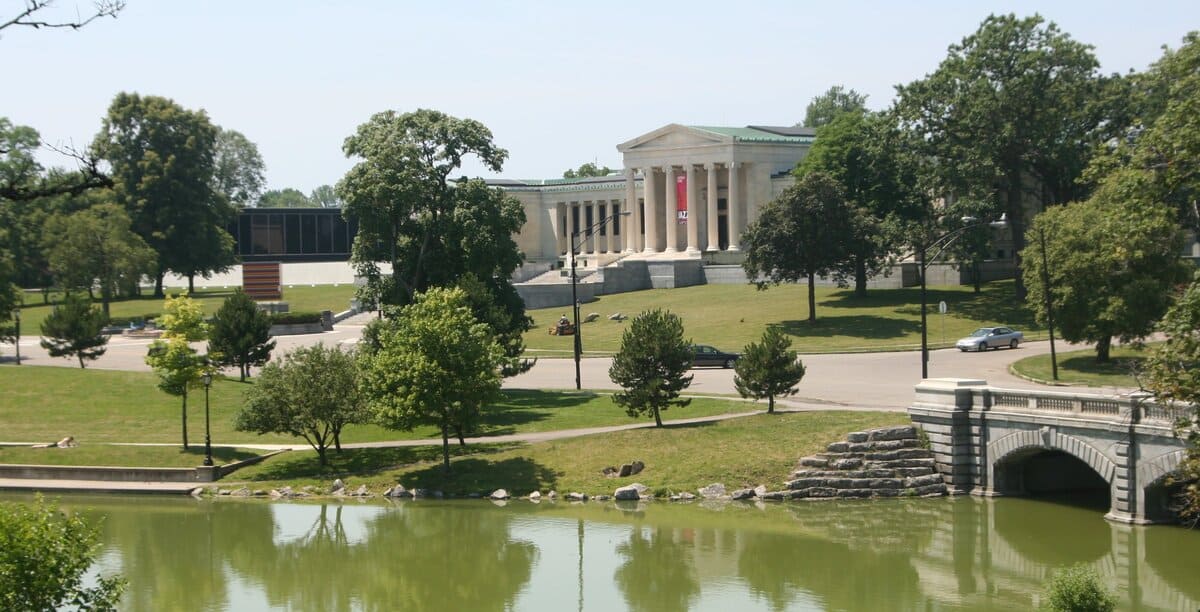
Frederick Law Olmsted, an American architect, is regarded as the creator of American landscape architecture. Frederick Law Olmsted was born on April 26, 1822, in Hartford, Connecticut, USA. He spent much of his boyhood in New England before working as a merchant seaman and writer, which carried him across the southern United States and even to China. Olmsted moved to New York City in 1857 with his design collaborator, Calvert Vaux. Olmsted retired to Massachusetts and died on August 28, 1903, at the age of 81.
Olmsted designed some of the most well-known urban parks in the United States, including Central Park and Prospect Park in New York City. Over the course of his long career, which began in the late 1800s, his firm executed more than 500 landscape projects throughout North America. Olmsted was a supporter of national parks and helped preserve places like Yosemite and Niagara Falls.
4. Daniel Burnham
Project: World’s Columbian Expo, 1893

An American architect and urban planner who had a significant impact on the construction of modern American cities. Daniel Hudson Burnham was born September 4, 1846, in Henderson, New York, USA. He came to Chicago, Illinois, with his family in the 1850s, where he spent the majority of his life. Burnham died abruptly at the age of 65 on June 1, 1912, while vacationing in Heidelberg, Germany, after having surgery for an intestinal disease earlier that year.
This American architect pioneered the City Beautiful movement, which combined large neoclassical architecture, parks, and well-organized city planning to produce beautiful and functional communities. Despite failing entry examinations at Harvard and Yale, Daniel Burnham obtained informal architectural training in Chicago, beginning in 1867, under the famed architect and engineer William LeBaron Jenney.
Suggested article to read: 27 Most Famous Architects in the World; 2024 Review
5. Peter Eisenman
Project: City of Culture of Galicia, Spain
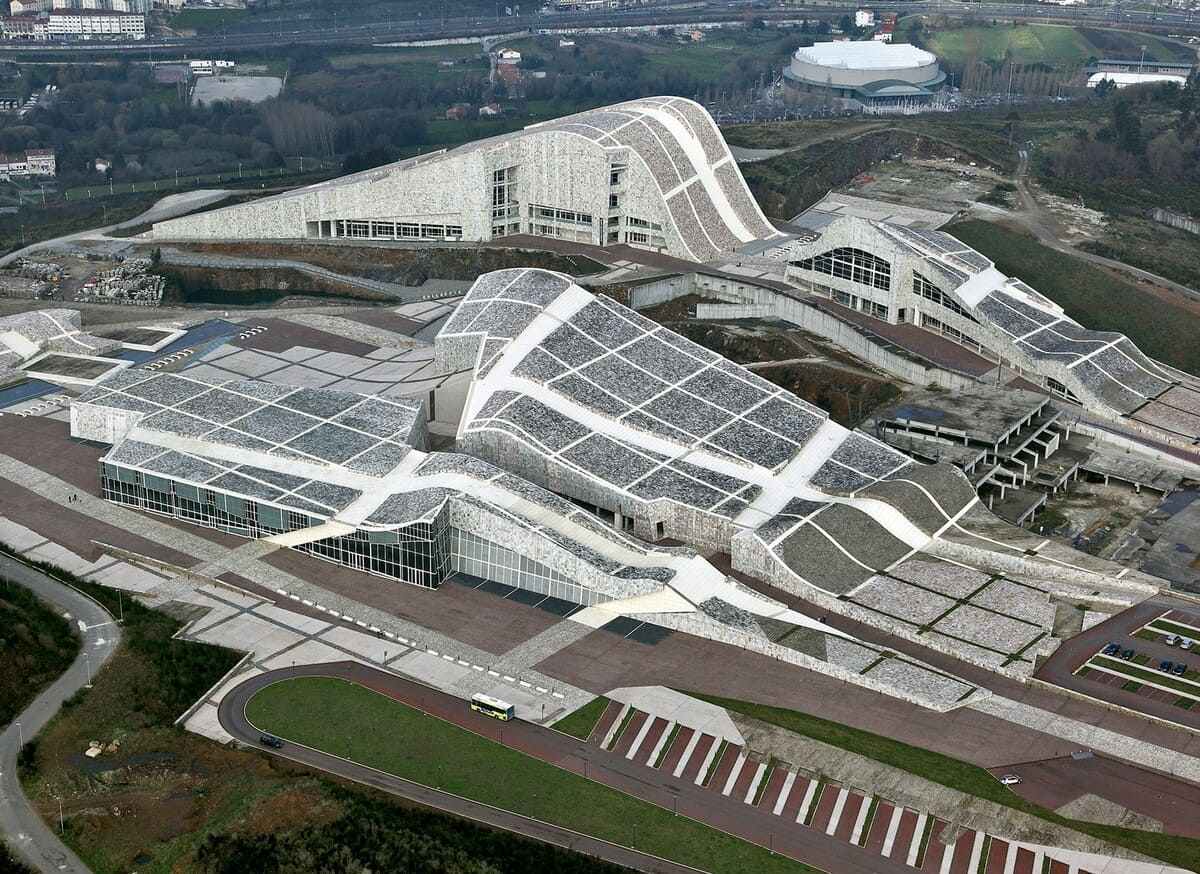
Peter Eisenman is a world-renowned American architect, educator, and theorist. He is a key figure in postmodern and deconstructivist architecture. Eisenman’s experimental and innovative designs call into question traditional architectural notions. He was born in 1932 in Newark, New Jersey, USA. He has mostly lived and practiced architecture in New York City, where he established the Institute for Architecture and Urban Studies in 1967 and taught at Cooper Union. Eisenman, an architect, educator, and author, lives in New York City.
Peter Eisenman is renowned for his postmodern and deconstructivist architecture. This American architect is highly creative designs frequently disrupt established architectural features and grids. Peter Eisenman’s greatest major accomplishment was bringing conceptual architecture, which prioritized theoretical concepts and form over function, into the architectural mainstream. Some of Peter Eisenman’s most well-known structures include the Wexner Center for the Arts in Ohio, the Memorial to the Murdered Jews of Europe in Berlin, Germany, the City of Culture of Galicia in Spain, and a series of conceptual dwellings, notably House VI in Connecticut.
6. Albert Frey
Project: Aluminaire House

Albert Frey, a Swiss-American architect, had a key role in the development of Desert Modernism, a mid-century modern style in Palm Springs, California. Albert Frey was born October 18, 1903, in Zurich, Switzerland. He was schooled and started his architectural career in Europe, working in Switzerland, Germany, Belgium, and France, including a stint in Le Corbusier’s workshop. Frey came to the United States in 1930, first settling in New York before ultimately relocating to Palm Springs, California, in 1939, where he lived until his death in 1998 at 95.
Albert Frey studied architecture and graduated from the Institute of Technology in Winterthur, Switzerland, in 1924. His early training there emphasized traditional construction over current design methods. Frey expanded his architectural education by working with notable European modernists such as Le Corbusier, for whom he worked in Paris from 1928 to 1930. Frey received the majority of his training through hands-on apprenticeships rather than conventional academic degrees.
7. Robert Venturi
Project: Children’s Museum of Houston, Texas, USA, 1992
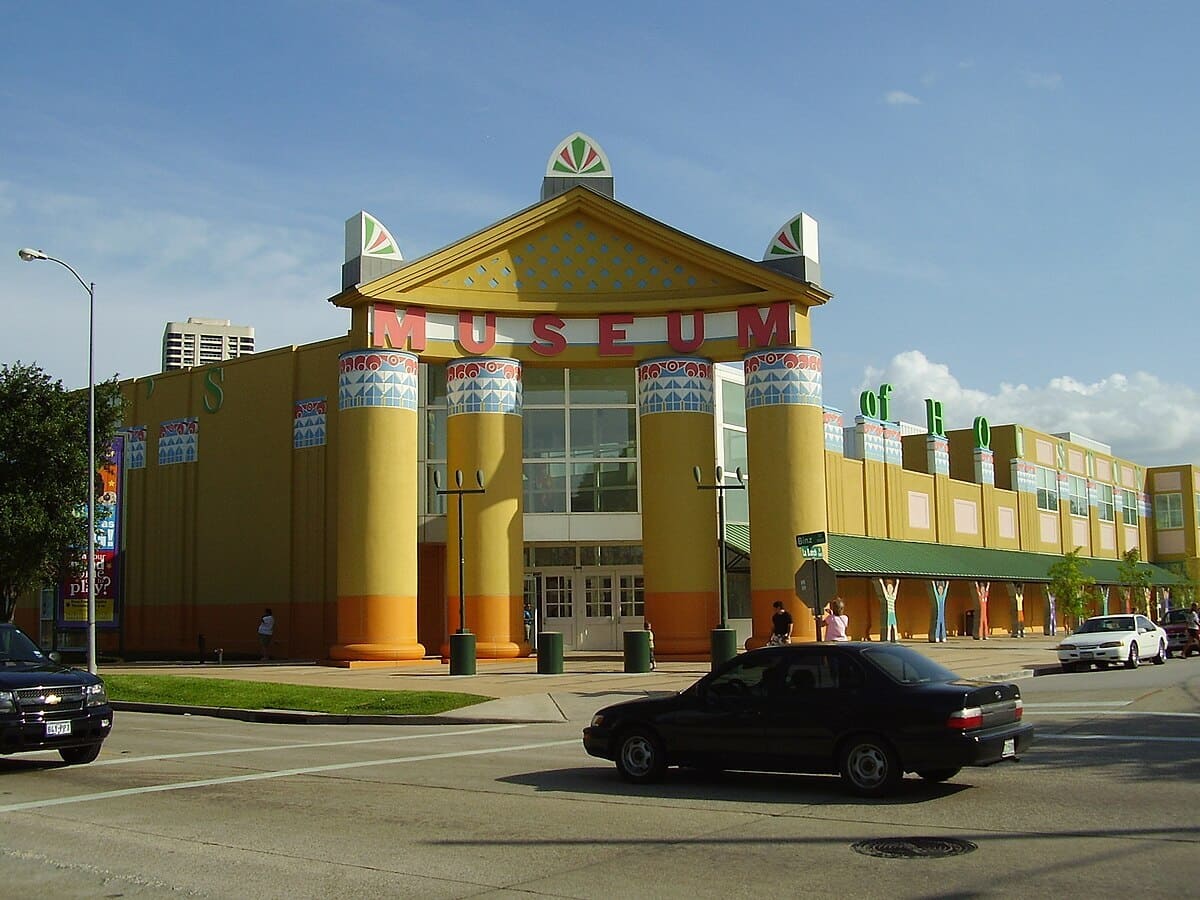
Robert Venturi was a prominent American architect, the founder of Venturi, Scott Brown and Associates, and a key contributor in the postmodern architecture movement. Venturi is well-known for his writings and architectural works that challenge modernist dogma and advocate for more inclusive, historical, and communicative architecture, which he shares with his wife and partner Denise Scott Brown. Robert Venturi was born on June 25, 1925, in Philadelphia, Pennsylvania, USA. He spent the majority of his time in Philadelphia, where he practiced architecture. Venturi passed away on September 18, 2018, in Philadelphia at 93.
This American architect earned his undergraduate and master’s degrees in architecture at Princeton University in New Jersey in the late 1940s. He received a Rome Prize Fellowship to study at the American Academy in Rome from 1954 to 1956. Venturi taught architecture at the University of Pennsylvania in Philadelphia for more than two decades, beginning in the early 1960s.
8. Philip Johnson
Project: The Crystal Cathedral
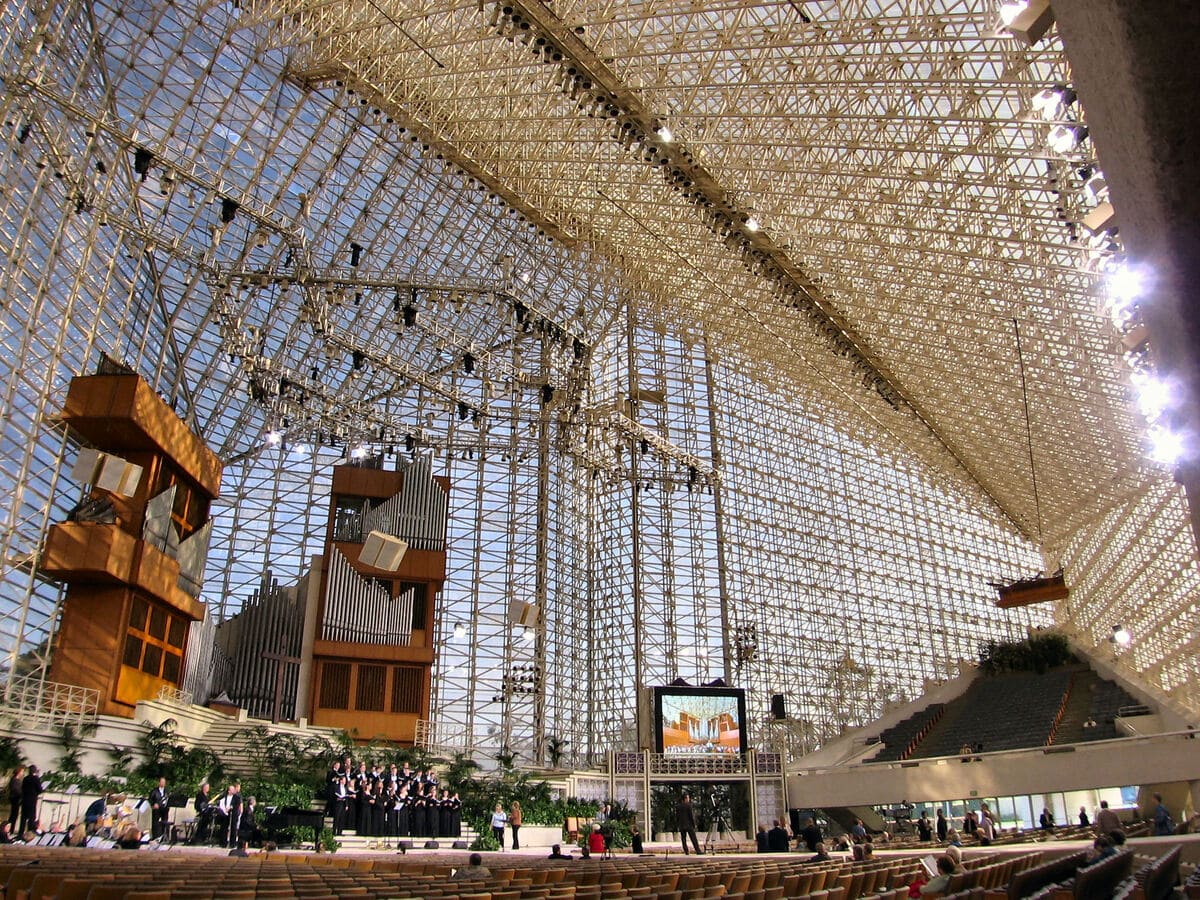
He was a prominent American architect and architectural critic. He co-founded the International Style of Architecture and created numerous classic modernist structures. Johnson advocated modern architecture as head of the architecture department of the Museum of Modern Art in New York. Philip Johnson was born in Cleveland, Ohio, USA, in 1906. He grew up in different Ohio cities before his family moved to New London, Connecticut, in 1913.
Philip Johnson graduated from Harvard University with a bachelor’s degree in philosophy in 1930. While at Harvard, he studied art and architectural history, which kindled his interest in contemporary architecture. Johnson became director of the Department of Architecture and Modern Art at New York’s Museum of Modern Art in 1932. He was primarily self-taught in architecture. Philip Johnson was born in Cleveland, Ohio, on July 8, 1906. He spent the majority of his time in New York City, where he practiced architecture. This American architect also owned the Glass House in New Canaan, Connecticut, which became a notable architectural monument. He died on January 25, 2005, at the age of 98, in his Glass House home.
9. Wirt C. Rowland
Project: Cathedral of Finance
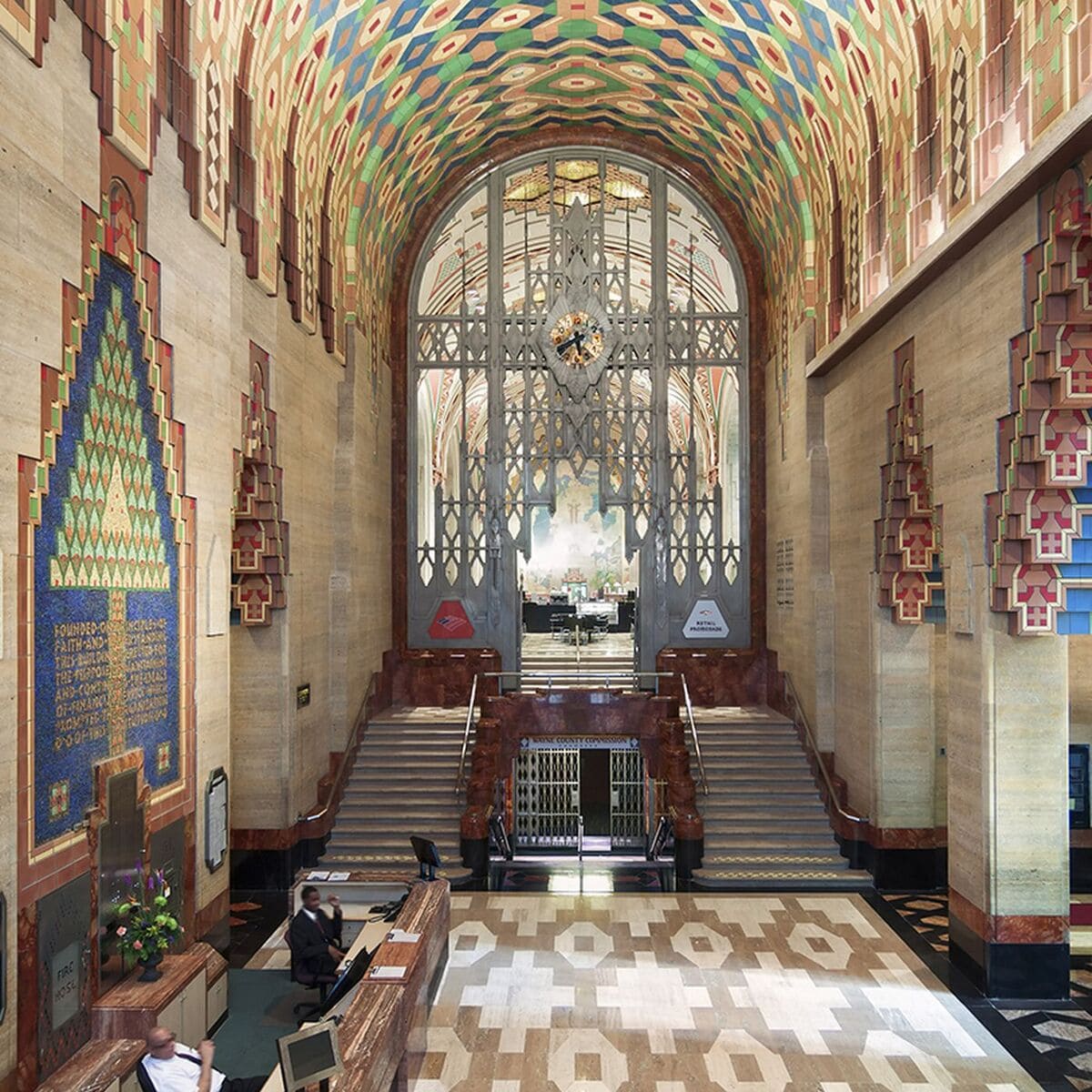
Wirt C. Rowland, a renowned American architect based in Detroit, Michigan, designed many of the city’s most recognizable skyscrapers and buildings in the early twentieth century. He was born on December 1, 1878, in Clinton, Michigan, USA. After arriving to Detroit in 1901, he studied architecture and spent the rest of his career working there. Rowland maintained close ties to his hometown of Clinton throughout his life, constructing several projects there, including the chapel extension for the First Congregational Church of Clinton. He died in Grand Rapids, Michigan, in 1946, at the age of 67.
Throughout his 50-year career, Rowland worked for notable Detroit architects such as Rogers & MacFarlane, George D. Mason, Albert Kahn, Smith Hinchman, and Grylls. This American architect pioneered an architectural style that combined Gothic and Art Deco inspirations with elaborate decoration. Rowland’s notable structures, which helped create Detroit’s skyline, include the Buhl Building, the Penobscot Building, and his most famous luxurious Guardian Building, known as the “Cathedral of Finance.” Wirt C. Rowland began his apprenticeships in 1901 at Detroit firms Rogers & MacFarlane and George D.
FAQs
Who were some of the most famous American architects who shaped modern design?
- Answer: Ludwig Mies van der Rohe, Norma Merrick Sklarek, Frederick Law Olmsted, and Daniel Burnham are among the most well-known American architects who have influenced modern architecture.
What is the legacy of Ludwig Mies van der Rohe in American architecture?
- Answer: Ludwig Mies van der Rohe was a well-known modernist American architect of the twentieth century, and his work, such as the IBM Building in Chicago, helped establish the International Style, which came to define contemporary architecture.
What contributions did Norma Merrick Sklarek make to the field of American architecture?
- Answer: Norma Merrick Sklarek was a pioneering African-American architect who broke down barriers in the field, working on notable projects such as the United States Embassy in Tokyo, Japan, and becoming the first Black woman to be licensed as an architect in both New York and California.
What is Frederick Law Olmsted known for in American architecture?
- Answer: Frederick Law Olmsted is considered as the father of American landscape architecture, having designed notable urban parks such as Central Park and Prospect Park and contributed to the construction of national parks such as Yosemite.
Conclusion
The architecture of the twentieth century is a collection of thought-provoking and encompassing modernism that emerged in various forms throughout the world. During this time, embodied styles including as expressionism, futurism, and art deco were combined with novel construction processes and materials such as concrete, steel, and glass. Some American architects led this architectural style, presenting some of the most innovative projects as examples of functionality, minimalism, and unorthodox design approaches.
Suggested article for reading:
Drones for Project Management in Construction 2025
Top 5 Copilot Tools for Project Management: A Comprehensive Guide
Top 5 Megaprojects in India; Engineering Marvels You Must See!
9 Best Construction Companies in India; Leaders Shaping the Future!
Project Management with AI: Can AI Replace a Project Manager?
Resources:
ArchitectureLab | BYF | Dezeen | Novatr | WideWalls | UMassPress | Re-thinkingthefuture | HowStuffWorks
For all the pictures: Archdaily

